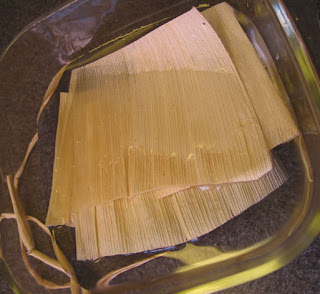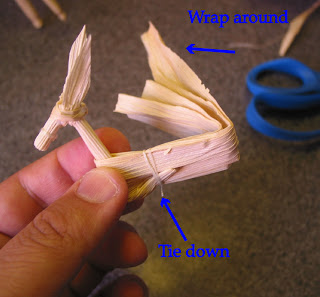
I used to have a jeweled Makech scarab just like the one pictured above when I was a kid. I got him during a trip to Veracruz. According to Raul Ybarra's Biblioteca de Joyeria, (Library of jewels, in Spanish) the Makech (or Maquech) are a variety of beetles from the Yucatan Peninsula. Different from other coleoptera, the Makechs are wingless. They live in decaying trees, and absorb nutrients and moisture from bark. To ancient Mexicans the association with jewelry was probably obvious: These animals have a light golden pronotum and their black, metal like legs adhere to fabric just like velcro. Yucatecans painted them and would add little crystals in order to sell them as "living jewelry". The Makech are slow, yet a little "leash" is attached to them so they can walk around without getting lost. According to Ybarra the Makech spend most of their life as larvae, once they reach full maturity they stop eating and breathing until they eventually die.
There is a legend behind the use of Makech as jewelry. Like many other Mexican legends (the one about vanilla, and the legend of the volcanoes) this one has to do with tragic love:
A beautiful Mayan princess is not allowed to marry a prince from a rival clan. Heartbroken, she stops eating and drinking, preferring to die than to live without her lover's embrace. Before dying, a powerful Medicine Man (a "Chaman") takes pity on her and transforms her into a Makech beetle, a beautiful living broach for the prince to wear on his chest, right next to his heart.
On a less romantic note: To the naked eye these animals don't seem to have a mouth, eyes or an anus. They don't appear to drink water, eat or produce waste. Native people of the Yucatan used to say that the Makech could live to be a hundred years, miracously surviving by "eating" the air around them. The lack of water and waste may have prompted the enterprising folks at Industrias Makech (creators of ecological waterless urinals) to adopt a Makech as their symbol.

To the Egyptians the beetle was also a powerful symbol associated with immortality. You can read an amazing article by Yves Cambefort about beetles as religious symbols at bug bios. Mr. Yves claims that "Ornaments used by traditional cultures are not purely for decorative appeal; they posses an auspicious nature believed to increase the bearer's strength. Therefore, as often as possible, edible objects are used as ornaments, especially if they have additional aesthetic qualities and shamanic symbolism". That statement made a lot of sense to me. There are more than 80 species of edible scarabs in Mexico. Families of the the Cerambycidae, Scarabaeidae, Melolonthidae and Passalidae are eaten in the larva stages, often called "gusanos". Adult edible scarabs are called "Chahuis" or "Xamoles". The image below comes from wikipedia's Gastronomia Prehispanica de Mesoamerica. It shows edible larvae and toasted scarabs. Some bugs like "jumiles" (or Chumiles) are eaten while they are still alive. Eating live insects may have root in ritual, and it is possible that to ancient Mexicans there was also an association between scarabs and immortality, but I haven't been able to find any research supporting that. Still.....I think the subject is fascinating: Scarabs as jewelry, a possible shamanic symbol, and you can also eat them!

Of couse, everything old is new again. Jared Gold, fashion designer for Black Chandelier claims he invented the trend of living insect jewelry. His creations were featured in the show America's Next Top Model. Ironically, Mr. Gold uses an insect with less than sacred associations, alluding instead to images of dirt and urban decay: Cockroaches. I think it is interesting that the one similarity between roaches and scarabs is resiliency. When asked by the Washington Post about his inspiration Mr. Gold replied: "You know, the whole thing where we make collections of clothes and this came to me. You know, it is my job to come up with new things like this. It is what I do". In the same interview he also mentions the trend of living things as ornamentation, specifically Victorian ladies wearing baby monkeys on their hats. He vaguely references the Mexican Makech: "A version of this originated in South America. Women would pin a dead beettle to a cork and wear it on their dress. As far as live insects go, we are Patient Zero". You can see the full transcript of the interview at Black Chandelier. or The Washington Post (The image below comes from the Washington Post).

Back to my pet beetle: Little Mac the Makech came to live with me more than 30 years ago. As soon as we arrived to Mexico City I removed the jewels from his head and body because I believed it was cruel for him to wear them. I made a habitat for him in one of my mother's potted plants, where he was allowed to just be a scarab. He would slowly climb on the plant, at times he would hang on a dry branch for long periods of time. He passed on several months later. I buried his remains in the park in front of our condo, under a large tree where I also buried the remains of Grumpy, my hamster and Athos and Portos, my two turtles.
Finally, you may wonder what inspired me to post this? While browsing at Kinokuniya, one of my favorite bookstores in Japantown, I came across a book featuring Keisuke Kishi's amazing sculptures. They spoke to me of Makech, imagination, ingenuity and layers of history and meaning that go beyond a fashion trend.



































